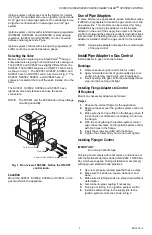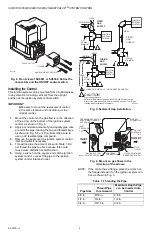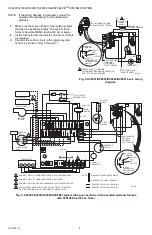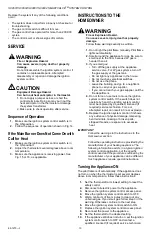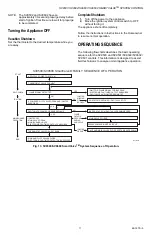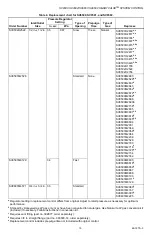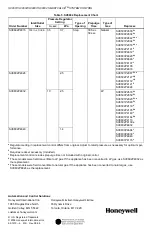
SV9501/SV9502/SV9601/SV9602 SMARTVALVE
TM
SYSTEM CONTROL
69-1270—3
2
demands on the controls. Special steps are
recommended to prevent nuisance shutdowns and control
failures due to frequent cycling, or severe environmental
conditions such as exposure to moisture, corrosive
chemicals, dust, or excessive heat. Following are the
possible causes of shutdown and the preventative
solutions.
Frequent Cycling
These controls are designed to cycle three to four times
each hour during the heating season. Year around
applications and applications with more frequent cycling
rates can wear out controls more quickly than normal
operation. Perform monthly system checks to make sure
the system operates properly.
Water or Steam Cleaning
Replace any electronic control that gets wet. If the
appliance is likely to be cleaned with water or steam,
cover the control and wiring to protect them from water or
steam flow. Mount the control high enough above the
cabinet bottom to avoid getting it wet during cleaning
procedures.
High Humidity or Dripping Water
Dripping water can cause the control to fail. Never install
an appliance where water can drip on the control. High
humidity around the control can cause the control to
corrode and fail. If the appliance is located in a humid
atmosphere, make sure the air circulation around the
control is adequate to prevent water condensing on the
control. Check the system regularly for signs of
condensation and corrosion.
Corrosive Chemicals
Corrosive chemicals can erode the control, eventually
causing a failure. If chemicals are used for routine
cleaning, make sure they do not touch the control. Where
chemicals are suspended in air, for example, in some
industrial or agricultural applications, protect the control
with an enclosure.
Dust or Grease Accumulation
Heavy accumulations of dust or grease can cause the
control to malfunction. Where dust or grease are
problems, cover the control to limit contamination.
Heat
Excessively high (above 175°F [79°C]) temperatures can
damage the control. Make sure the ambient temperature
at the control does not exceed the control rating. If the
appliance operates at very high temperatures, use
insulation, shielding and proper air circulation as
necessary to protect the control. The appliance
manufacturer should provide proper insulation or
shielding. Make sure there is proper air circulation when
installing the appliance.
Installation
WARNING
Fire or Explosion Hazard.
Can cause severe injury, death or property
damage.
Follow these warnings exactly as written.
1. Disconnect the power supply before wiring to
prevent electrical shock and equipment
damage.
2. Turn of the gas supply at the appliance service
valve before starting installation to avoid
dangerous accumulation of fuel gas.
3. Perform gas leak test after completing
installation.
4. Do not bend pilot tubing at ignition system
control or pilot burner after tightening the
compression fitting. Bending can cause gas
leakage at the connection.
5. Always install a sediment trap in the gas supply
line to prevent contamination of the ignition
system.
WARNING
Fire or Explosion Hazard.
Can cause severe injury, death or property
damage.
Follow this warning exactly as written.
• Always change the main and pilot burner
orifices when converting between LP and
natural gas. Follow appliance manufacturer
specifications and instructions.
CAUTION
Equipment Damage Hazard.
Improper device replacement will damage the
equipment.
The SV9501, SV9502, SV9602, and SV9601
provide direct replacement only as shown in Table
4 or Table 5 of this manual. Use the Y8610 to
convert standing pilot systems to electronic
ignition systems.
CAUTION
Equipment Damage Hazard.
Can Burn Out Heat Anticipator in Thermostat.
1. Never apply a jumper across or short the
terminals in the SV9501, SV9502, SV9602, or
SV9601 connectors or appliance wiring
harnesses.
2. Never short the electric fan timer (EFT) output.
Shorting the output can damage the EFT drive
circuitry.
IMPORTANT
These ignition system controls are shipped with
protective seals over inlet and outlet tappings.
Do not remove seals until ready to connect
piping.
Follow the appliance manufacturer’s instructions if
available. Otherwise, use these instructions as a guide.



